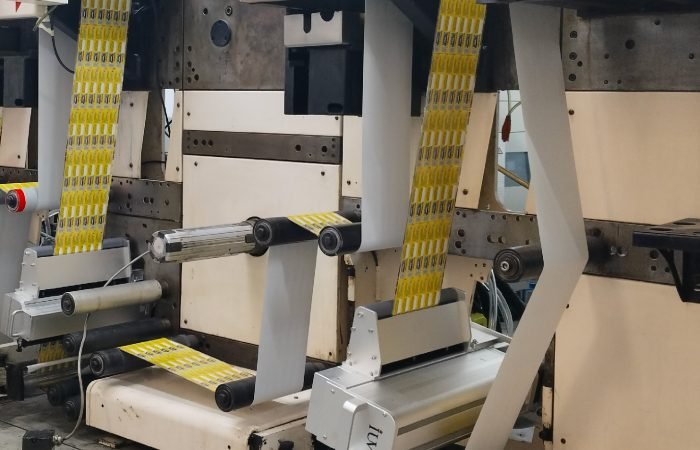Alright, let’s dive into the world of printing and see how upgrading to a modern LED curing system can really pay off. This is a topic I’m passionate about, both from an engineering standpoint and from a marketing perspective. Getting the technical details right and making them accessible is key to helping businesses make smart decisions.
When you’re running a printing operation, especially in the narrow web sector focused on labels, every penny counts. The decision to invest in new equipment isn’t one to be taken lightly. You’ve got to look at the bottom line and figure out what’s going to bring the best return on investment. For a long time, traditional UV curing systems were the standard. They work, sure, but they come with their own set of challenges and costs.
Think about the energy consumption of older mercury vapor lamps. They draw a significant amount of power and generate a lot of heat. This heat can be a problem, especially when you’re printing on heat-sensitive substrates common in label applications. You might need extra cooling systems, which adds to both the initial cost and the ongoing operational expenses. Plus, mercury lamps have a limited lifespan and require regular replacement, contributing to material costs and downtime.
Now, let’s talk about LED UV curing. This technology has been a game-changer for the printing industry. Instead of mercury, LEDs emit UV light at specific wavelengths. This is a more targeted and efficient way to cure inks and coatings. The immediate benefit is a dramatic reduction in energy usage. We’re talking up to 70-80% less energy compared to conventional UV lamps. For a printing business running multiple shifts, this translates into substantial savings on electricity bills. That’s a direct hit to your operating costs, and a significant boost to your ROI calculation.
The reduced heat output is another massive advantage. With LEDs, the heat is directed more precisely, meaning less stray heat hits your substrate. This opens up possibilities for printing on a wider range of materials, including thinner films and delicate plastics, without causing distortion or damage. This expanded material capability can lead to new market opportunities and a more diverse product offering. For flexographic printing, which is prevalent in narrow web label production, this is particularly valuable. It allows for sharper dot reproduction and better print quality on challenging surfaces.
Consider the lifespan of LED arrays. They can last for tens of thousands of hours, far exceeding the typical lifespan of mercury lamps. This means fewer lamp replacements, less downtime for maintenance, and a more predictable cost structure. No more scrambling to order new lamps or dealing with unexpected production halts. This reliability directly impacts your overall equipment effectiveness (OEE) and contributes to smoother, more profitable operations.
From a quality perspective, LED UV curing often delivers superior results. The consistent output of UV light ensures uniform curing across the entire printed area. This leads to enhanced gloss, better adhesion, and improved scratch and chemical resistance. For brand owners and end-users, these are critical performance attributes. For the printer, it means higher quality output, fewer rejections, and a stronger reputation for producing premium labels. In offset printing, especially for high-volume label runs, this consistent quality is paramount.
The instant on/off nature of LEDs also plays a role. Unlike mercury lamps that require warm-up and cool-down periods, LEDs are ready to go immediately. This is especially beneficial in quick-turnaround print environments. It reduces wasted time and energy, contributing to increased productivity. Think about short print runs where the press might be stopped and started frequently. The ability to instantly engage the curing unit saves valuable minutes, which quickly add up over a day or a week.
When you’re doing a cost analysis, it’s not just about the initial purchase price of the LED curing system. You need to factor in the long-term savings. Lower energy bills, reduced consumable costs (fewer lamps, less waste due to substrate issues), and increased uptime all contribute to a compelling ROI. You might see payback periods of just one to three years, depending on your production volume and current energy costs. This makes the investment not just a wise choice, but often a necessary one to remain competitive.
The environmental aspect is also worth noting. Reduced energy consumption means a smaller carbon footprint. Fewer hazardous materials, like mercury, are used and disposed of. This aligns with growing sustainability initiatives within the printing industry and can be a strong selling point for your business. Customers are increasingly looking for environmentally conscious suppliers, and adopting LED UV curing technology can be a key differentiator.
For those in the narrow web printing space, where space can be at a premium, LED curing systems are often more compact than traditional setups. This can be a significant advantage, allowing for easier integration into existing press lines or the design of more efficient new lines.
In summary, upgrading to a modern LED curing system for your printing operations, whether it’s for labels, flexible packaging, or other narrow web applications, offers a multifaceted approach to improving your business. The immediate benefits of reduced energy consumption and lower heat output lead to tangible cost savings. The extended lifespan of the equipment and improved print quality contribute to greater reliability and a stronger market position. When you crunch the numbers, the ROI is often clear, making it a strategic investment for any forward-thinking printing company.












